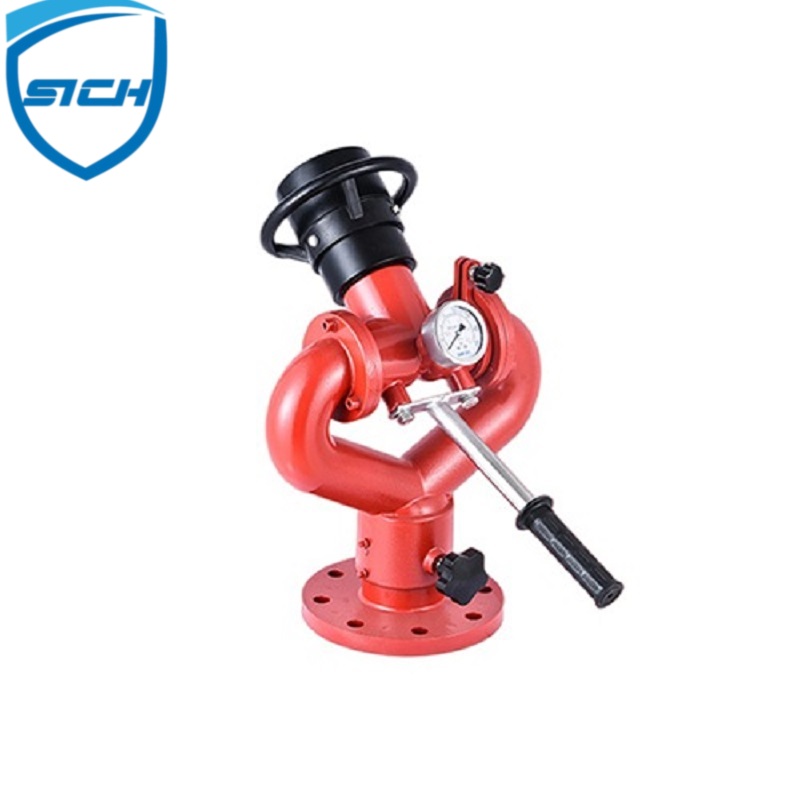What maintenance requirements are necessary to ensure the operational readiness of a fire monitor system?
Maintaining a fire monitor system is crucial to ensure its operational readiness and effectiveness during firefighting operations.
Here are essential maintenance requirements:
- Regular Inspections: Scheduled inspections should be conducted to assess the condition of the system components, including hoses, nozzles, valves, pumps, and control mechanisms.
- Functional Testing: Periodic testing of the system’s functionality is essential to verify that all components are operating correctly, including water flow, nozzle adjustments, and control mechanisms.
- Cleaning and Lubrication: Cleanliness is vital for optimal performance. Regularly clean all components to remove debris, dirt, or residue that may affect the system’s operation. Lubricate moving parts as per manufacturer recommendations.
- Pressure Testing: Conduct pressure tests to ensure the system can withstand the required pressure levels without leaks or failures. This ensures the integrity of hoses, connectors, and valves.
- Pump Maintenance: For systems equipped with pumps, follow manufacturer guidelines for pump maintenance, which may include checks on seals, bearings, and lubrication.
- Corrosion Prevention: Inspect for any signs of corrosion on metal components. Implement preventive measures such as painting or applying protective coatings to prevent corrosion damage.
- Electrical System Check: For systems with electrical components, inspect wiring, connectors, and control panels for any signs of wear, damage, or electrical issues.
- Seal and Gasket Inspection: Regularly inspect and replace seals or gaskets that may deteriorate over time, ensuring proper sealing to prevent leaks.
- Documentation and Records: Maintain detailed records of maintenance activities, inspections, and any repairs conducted on the system. This helps track maintenance schedules and identifies recurring issues.
- Training and Personnel Competence: Ensure that personnel responsible for system maintenance receive proper training on maintenance procedures and safety protocols.
- Emergency Repairs: Have contingency plans in place for emergency repairs or replacements in case of unexpected system failures, ensuring quick restoration of the system’s functionality.
Following manufacturer guidelines and recommended maintenance schedules is crucial for maintaining the operational readiness and reliability of a fire monitor system. Regular maintenance helps identify and address issues early, ensuring the system is always prepared for firefighting operations.
What are the primary safety features incorporated into fire monitor systems to ensure safe operation for firefighters?
Fire monitor systems incorporate various safety features to ensure safe operation for firefighters during firefighting activities.
Some primary safety features include:
- Pressure Relief Valves: These valves are designed to prevent the buildup of excessive pressure within the system, ensuring that the equipment remains within safe operating limits and reducing the risk of equipment failure or ruptures.
- Overload Protection: Systems may include mechanisms that protect against damage caused by excessive loads or sudden surges in pressure, safeguarding the equipment and personnel.
- Temperature Monitoring: Monitoring systems can track the temperature of components, especially in high-pressure areas, helping prevent overheating and potential hazards.
- Emergency Shut-Off Controls: Fire monitor systems are equipped with emergency shut-off switches or controls, monitor wa fire allowing operators to quickly stop water flow in case of emergencies or malfunctions, ensuring immediate cessation of water discharge.
- Anti-Collision Sensors: Some systems have sensors or features to prevent collisions or accidents, especially in automated or remotely operated systems.
- Manual Override Functions: Operators can have manual override options in case of system malfunctions or when automated controls fail, allowing manual control over water discharge.
- System Stability Measures: Stabilization features ensure the stability and secure mounting of the system, preventing tipping or instability during operation.
- Safety Interlocks: These features prevent accidental activation or operation of the system, requiring specific steps or conditions to be met before use.
- Weatherproofing and Insulation: Systems are often designed with weatherproofing and insulation to protect against adverse weather conditions and to prevent electrical hazards.
- Operator Training and Safety Protocols: Alongside system features, comprehensive operator training and adherence to safety protocols are crucial for safe and effective operation.
These safety features collectively aim to minimize operational risks, prevent accidents, and ensure the overall safety of firefighters and personnel operating fire monitor systems during firefighting activities. Regular maintenance and adherence to safety guidelines are fundamental in maximizing safety when utilizing these firefighting systems.


Comments are closed.